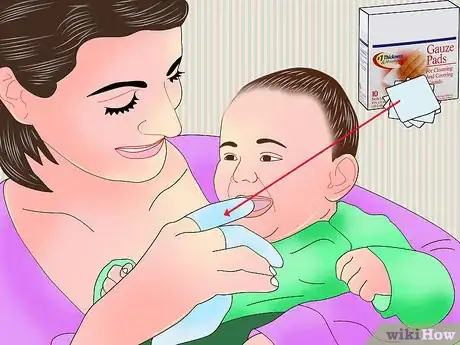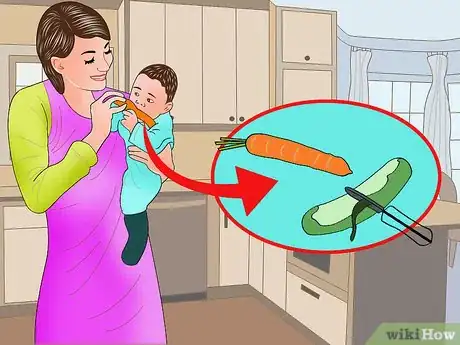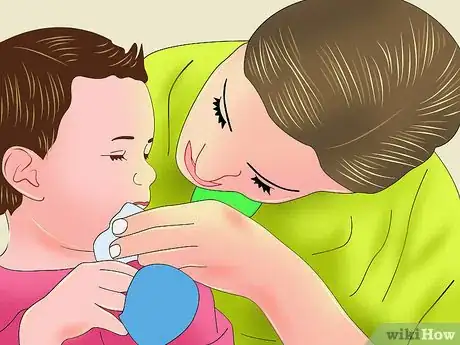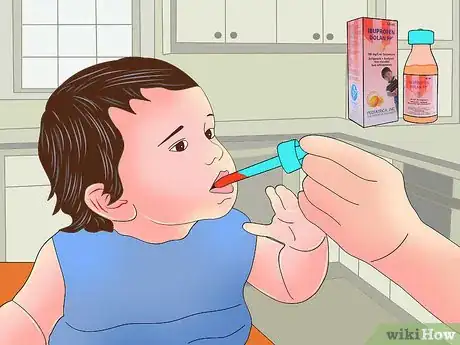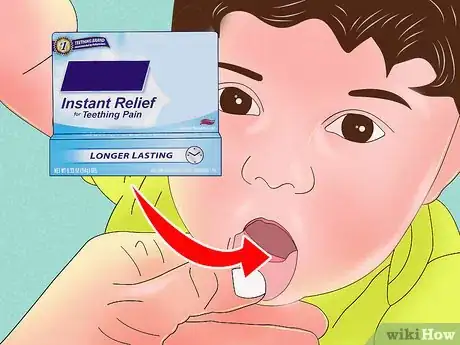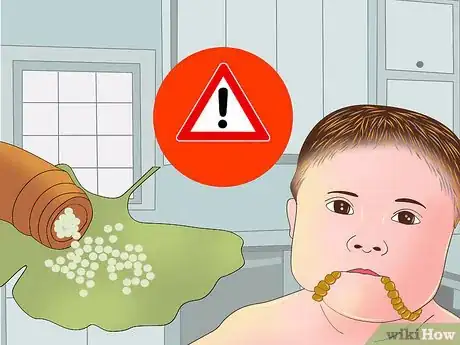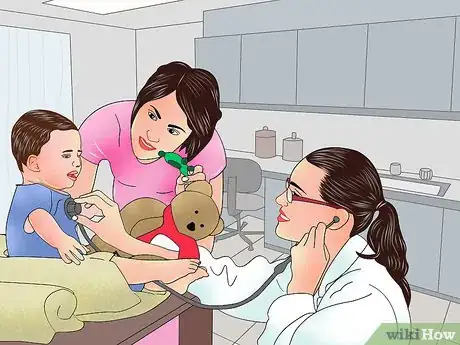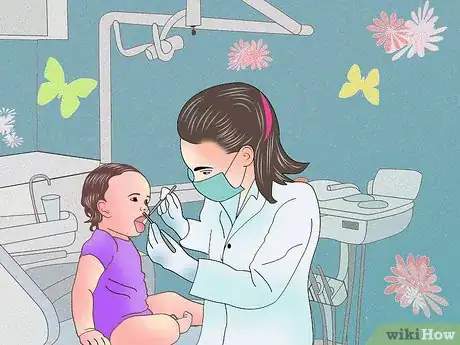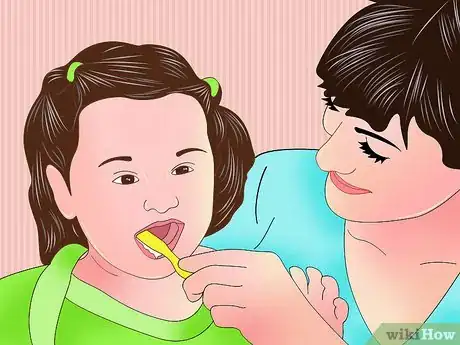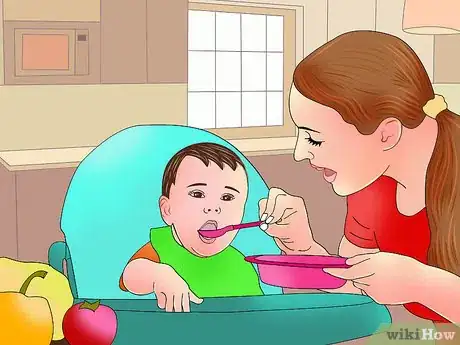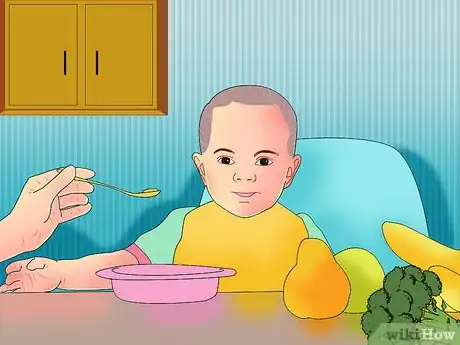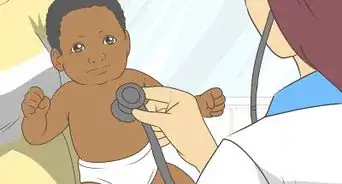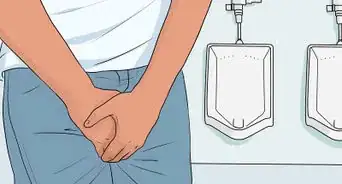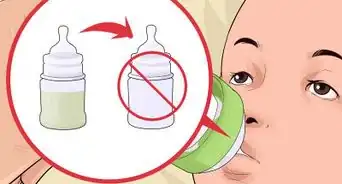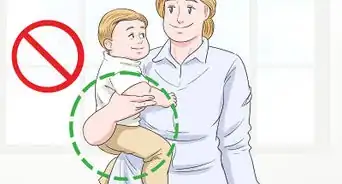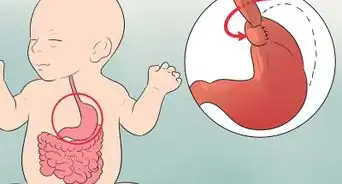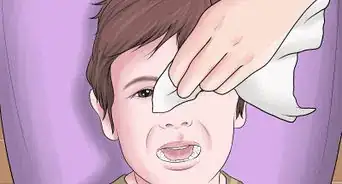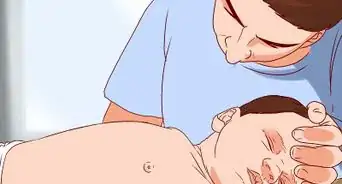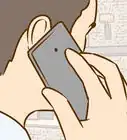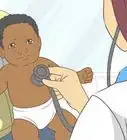This article was co-authored by Laura Marusinec, MD. Dr. Marusinec is a board certified Pediatrician at the Children's Hospital of Wisconsin, where she is on the Clinical Practice Council. She received her M.D. from the Medical College of Wisconsin School of Medicine in 1995 and completed her residency at the Medical College of Wisconsin in Pediatrics in 1998. She is a member of the American Medical Writers Association and the Society for Pediatric Urgent Care.
There are 7 references cited in this article, which can be found at the bottom of the page.
wikiHow marks an article as reader-approved once it receives enough positive feedback. In this case, 100% of readers who voted found the article helpful, earning it our reader-approved status.
This article has been viewed 458,615 times.
Teething is a normal part of a baby's development. Teething can cause pain and discomfort, which can be stressful for your baby. There are a variety of ways to soothe pain caused by teething. You can use a variety of home remedies or seek outside medical care.
Steps
Treating Teething At Home
-
1Rub your baby's gums with a clean finger. If your baby is teething, sometimes simply applying pressure can relieve some of the pain. Rub a clean finger over your baby's gums. If you're not comfortable using your finger, you can also use a moistened gauze pad.[1]
-
2Keep your baby's mouth cool. Keeping your baby's mouth cool can relieve some of the pain of teething. You can use a variety of cool substances to cool off your baby's gums and mouth.
- You can use a cold washcloth, a cold spoon, or a slightly chilled teething ring to help your baby feel better.[2]
- While cold substances can help, anything frozen can be bad for your baby's health. Contact with extremely cold temperatures can be harmful to the mouth and gums. Use your refrigerator instead of your freezer when cooling off silverware or teething rings.[3]
Advertisement -
3Invest in a teething device. You can purchase a teething device online or at a local drug store. Teething devices can be traditional teething rings, which are small plastic devices babies can chew on when their gums are bothering them. You can also buy teething blankets, which can be more convenient. Some teething devices vibrate to massage the gums and add extra relief.[4]
-
4Give your baby hard foods. If your baby is old enough to eat solid foods, harder foods can help. Your baby can chew or gnaw on harder food items, such as peeled cucumbers or carrots, or teething biscuits, and the pressure can provide pain relief.[5]
- Keep a close eye on your baby if you give him hard foods, or place the hard foods in a mesh feeding bag approved for this use. You want to make sure he does not choke.[6]
-
5Dry any drool you see. Babies tend to drool a lot when teething. If excessive drool dries on your baby's mouth, it can cause skin irritation. Make sure to wipe off any drool you see with a clean towel.[7]
- A water or cream-based lotion can be applied around your baby's mouth. This can also help prevent her skin from drying out due to drool.[8]
- In the event a drooling rash does occur, place a cloth under the bed sheet while she sleeps. You should also rub some baby lotion or ointment around her mouth and cheeks before bed.[9]
- If drooling is a common problem, consider a bib to catch drool as it falls.
Seeking Medical Care
-
1Try over-the-counter drugs. If home remedies aren't helping, there are a variety of over-the-counter medications designed for use on teething babies. Consider giving your baby painkillers if his teething is really bothering him.
- Acetaminophen (Tylenol) or ibuprofen (Advil, Children's Motrin) can be helpful for a teething baby. It might be a good idea to run this by your baby's doctor first to ask about dosage and any safety precautions you should take.[10] Do not give ibuprofen to babies under six months of age.
- Avoid any medications that contain benzocaine, a common pain reliever. In rare cases, this can cause a serious condition that reduces the amount of oxygen in the blood.[11]
- You should have your baby evaluated by a doctor before administering any medication if teething is severe. You want to make sure the pain is caused by teething and not an undetected underlying condition, like an ear infection.[12]
-
2Use teething gels. You can buy teething gels at a local pharmacy or supermarket if your baby does not respond to other treatments. Gels usually contain a local antiseptic or anesthetic. Use a sugar-free gel specifically recommended for babies. Gels usually wash away with a baby's saliva, so the effects might not last long. Talk to your doctor before using any gels.[13]
- Avoid teething gels with benzocaine and make sure not to use teething gels more than recommended.
-
3Be cautious when trying homeopathic cures. Many parents use homeopathic methods to treat teething. While some of these methods may be relatively harmless, there is little scientific evidence to back up claims of effectiveness. Certain types of homeopathic methods may be harmful to your baby.
- Homeopathic powders or granules, sold by many pharmacies, are relatively harmless as long as they're sugar-free. However, most evidence regarding their effectiveness is anecdotal. If your baby is not responding to other treatments, you may want to try such powders but know there is no guarantee they will work.[14]
- Some stores sell amber bracelets or necklaces which supposedly aid with teething pain by releasing a small amount of oil into the baby's skin. You should take extreme caution if you decide to try this method. Bracelets and necklaces both carry a choking risk for a small child. Babies may also suck or chew on such devices, and dislodged beads also carry a choking risk. There is no scientific evidence that shows amber is effective during teething pain.[15]
-
4Know when to see a doctor. Teething is usually a normal part of a baby's growth and development. It can be handled at home without a doctor's assistance. However, if your baby develops a fever or seems particularly uncomfortable, she may have developed an infection or illness. Make an appointment with your doctor as soon as possible.[16]
Moving Forward
-
1Take your baby to the dentist. When your baby's first tooth arrives, he should see a dentist. Make an appointment no more than six months after the first tooth develops but before your baby's 1st birthday. Your dentist will check to make sure the baby's teeth are coming in healthy and strong.[17]
-
2Care for your baby's new teeth. As your baby's teeth come in, take efforts to care for them. Healthy teeth and gums are important for your baby's overall health.
- Wash your baby's gums with a clean, damp washcloth each day. This will prevent bacteria from building up.[18]
- Switch to a soft-bristled toothbrush as your baby's first teeth begin to appear. Your child will not learn to spit until the age of three. Before this, use only a small bit of fluoride toothpaste that is approved for babies or children. It should be no bigger than a grain of rice.[19]
-
3Prevent tooth decay by feeding your baby a healthy diet. As your baby begins to transition to eating solid foods, provide her with healthy, low-sugar options. Always brush your baby's teeth after she eats. Minimize feeding her milk during the night and avoid letting her suck on a bottle at night or putting juice or other sugared drinks in a bottle.[20]
References
- ↑ http://www.mayoclinic.org/healthy-lifestyle/infant-and-toddler-health/in-depth/teething/art-20046378?pg=1
- ↑ http://www.mayoclinic.org/healthy-lifestyle/infant-and-toddler-health/in-depth/teething/art-20046378?pg=1
- ↑ http://www.mayoclinic.org/healthy-lifestyle/infant-and-toddler-health/in-depth/teething/art-20046378?pg=1
- ↑ http://www.babycenter.com/0_parents-say-teething-solutions_11957.bc
- ↑ http://www.mayoclinic.org/healthy-lifestyle/infant-and-toddler-health/in-depth/teething/art-20046378?pg=1
- ↑ http://www.mayoclinic.org/healthy-lifestyle/infant-and-toddler-health/in-depth/teething/art-20046378?pg=1
- ↑ http://www.mayoclinic.org/healthy-lifestyle/infant-and-toddler-health/in-depth/teething/art-20046378?pg=1
- ↑ http://www.mayoclinic.org/healthy-lifestyle/infant-and-toddler-health/in-depth/teething/art-20046378?pg=1
- ↑ http://www.parenting.com/article/what-can-i-do-about-my-babys-drool-rash
- ↑ http://www.mayoclinic.org/healthy-lifestyle/infant-and-toddler-health/in-depth/teething/art-20046378?pg=1
- ↑ http://www.mayoclinic.org/healthy-lifestyle/infant-and-toddler-health/in-depth/teething/art-20046378?pg=1
- ↑ http://www.babycenter.com/0_teething-remedies-how-to-treat-teething-pain_10357438.bc
- ↑ http://www.babycentre.co.uk/a567379/teething-how-to-ease-the-distress
- ↑ http://www.babycentre.co.uk/a567379/teething-how-to-ease-the-distress
- ↑ http://www.babycentre.co.uk/a567379/teething-how-to-ease-the-distress
- ↑ http://www.mayoclinic.org/healthy-lifestyle/infant-and-toddler-health/in-depth/teething/art-20046378?pg=2
- ↑ http://www.webmd.com/parenting/baby/tc/teething-home-treatment
- ↑ http://www.mayoclinic.org/healthy-lifestyle/infant-and-toddler-health/in-depth/teething/art-20046378?pg=2
- ↑ http://www.mayoclinic.org/healthy-lifestyle/infant-and-toddler-health/in-depth/teething/art-20046378?pg=2
- ↑ http://www.webmd.com/parenting/baby/tc/teething-home-treatment
About This Article
To soothe a teething baby, rub your baby's gums with a clean finger to temporarily relieve some of the pain. You can also give your baby a cold wash cloth, a cold spoon, or a slightly chilled teething ring to ease the pain. If your baby is old enough to chew or gnaw on harder food items, like peeled cucumbers or carrots, let them chew on those for pain relief. Make sure to wipe away drool around your baby's mouth often to prevent skin irritation from dried drool. For tips on dealing with a drool-related skin rash, read on!
